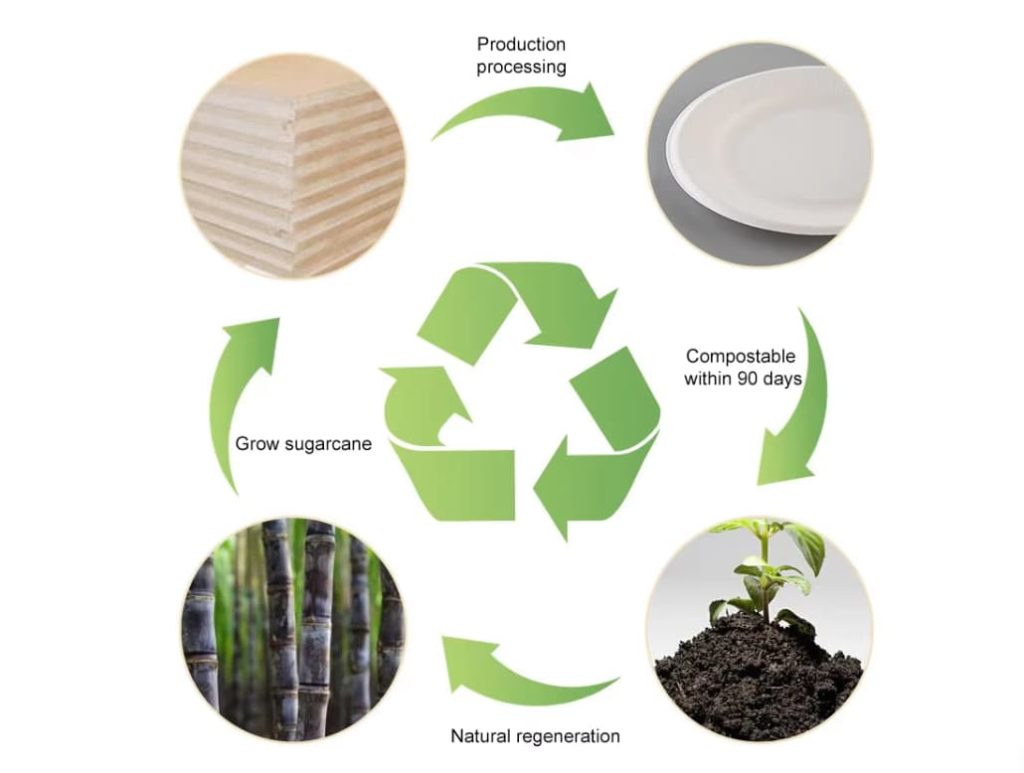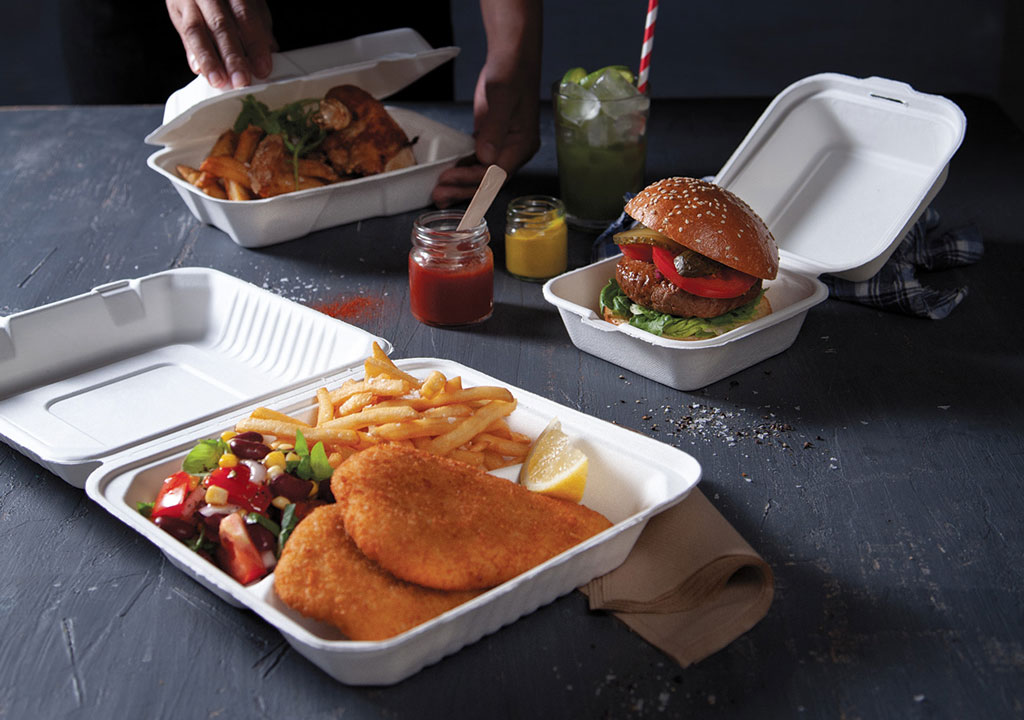Introduction
In today’s eco-conscious world, 100% biodegradable and compostable packaging is no longer a niche trend—it’s an essential solution for reducing plastic pollution and meeting growing consumer expectations. Global legislation is moving away from single-use plastics, forcing businesses to adopt sustainable alternatives that do not harm the planet. Unlike traditional plastic, which can persist for hundreds of years, 100% biodegradable and compostable packaging safely decomposes into natural elements, leaving no trace of harmful residues.
🌍 What Does 100% Biodegradable and Compostable Mean?
The terms biodegradable and compostable are often used interchangeably, but they have different meanings:
| Term | Definition |
|---|---|
| Biodegradable | Breaks down into natural components like water, carbon dioxide, and biomass under environmental conditions. |
| Compostable | Decomposes in a controlled composting environment within a specific timeframe, leaving no toxins and enhancing soil health. |
When packaging is labeled as 100% biodegradable and compostable, it means that under the right conditions, the product fully decomposes and returns to nature without generating microplastics or chemical waste.
✅ Why Businesses Should Switch to 100% Biodegradable and Compostable Packaging
The benefits of transitioning to this type of packaging are both environmental and strategic:
1. Reduces Plastic Waste
Over 8 million tons of plastic enter the oceans each year (Ellen MacArthur Foundation, 2023). By switching to biodegradable solutions, companies help reduce this alarming figure and demonstrate environmental responsibility.
2. Meets Global Regulations
Many regions—including the EU, Canada, and U.S. states like California—have implemented bans on non-sustainable single-use plastics. Using 100% biodegradable and compostable packaging ensures compliance and avoids penalties.
3. Enhances Brand Reputation
Consumers are increasingly eco-conscious. According to McKinsey (2023), 74% of consumers are willing to pay more for products with sustainable packaging. Businesses adopting green packaging strengthen their brand image and build long-term loyalty.
4. Safe for Food Contact
Certified compostable materials like PLA (Polylactic Acid) and bagasse are not only eco-friendly but also safe for direct food contact, making them ideal for restaurants, cafes, and delivery services.
📈 Market Growth and Consumer Demand
The global compostable packaging market is projected to reach $23.4 billion by 2032, growing at a CAGR of 7.5% (Allied Market Research, 2023). This trend is driven by strict legislation, corporate sustainability goals, and strong consumer demand for eco-friendly solutions.
For foodservice businesses, this means adopting 100% biodegradable and compostable packaging is no longer optional—it’s a competitive advantage.

🌱 Materials Commonly Used in 100% Biodegradable and Compostable Packaging
- PLA (Polylactic Acid): Derived from renewable resources such as corn starch, widely used for cups, lids, and straws.
- Bagasse: A by-product of sugarcane, perfect for food containers, trays, and bowls.
- Palm Leaf & Paper Pulp: Popular for plates and clamshell packaging in takeaway and catering.
Xiamen Dashan, for example, offers a complete range of PLA and bagasse-based food packaging that meets international compostability standards. These products are ideal for fresh produce, bakery, salads, and ready-to-eat meals, making them a sustainable choice for businesses worldwide.

🔍 FAQ: Everything You Need to Know About 100% Biodegradable and Compostable Packaging
Q1: How long does it take for biodegradable and compostable packaging to break down?
A: Under industrial composting conditions, it usually decomposes within 90–180 days.
Q2: Is biodegradable plastic the same as compostable?
A: No. While all compostable plastics are biodegradable, not all biodegradable plastics meet the strict requirements for compostability.
Q3: Can I compost these products at home?
A: Some materials like bagasse can break down in home compost systems, but PLA typically requires an industrial facility.
✅ Conclusion
Switching to 100% biodegradable and compostable packaging is more than an environmental obligation—it’s a smart business decision. With global regulations tightening and consumers demanding sustainability, businesses must act now. Embracing materials like PLA and bagasse not only reduces plastic pollution but also strengthens brand trust and future-proofs operations.
The future of packaging is green, safe, and fully compostable. Is your business ready to lead the change?
📚 References
Ellen MacArthur Foundation. (2023). New Plastics Economy Global Commitment.
https://ellenmacarthurfoundation.org/global-commitment
McKinsey & Company. (2023). Sustainability in Packaging: Consumer Insights.
https://www.mckinsey.com/industries/paper-forest-products-and-packaging/our-insights/sustainability-in-packaging-2023-inside-the-minds-of-global-consumers
Allied Market Research. (2023). Compostable Packaging Market Size and Forecast.
https://www.alliedmarketresearch.com/compostable-packaging-market
European Bioplastics. (2023). Bioplastics Market Data.
https://www.european-bioplastics.org/market/
U.S. Environmental Protection Agency (EPA). (2023). Reducing Plastic Waste.
https://www.epa.gov/plastic-pollution
